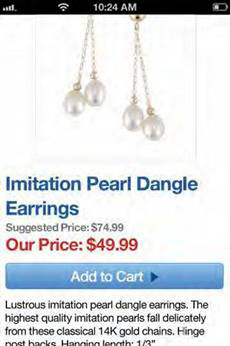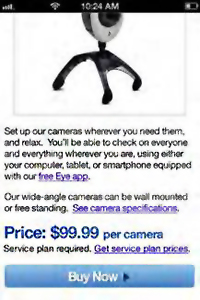New FTC Dot-Com Rules Offer Digital Ad Guidelines for the Facebook/Twitter Age

It seems like a lifetime ago—and in the fast-moving world of
the Internet, perhaps it was—that the Federal Trade Commission (FTC) issued "Dot
Com Disclosures: Information About Online Advertising," which offered
guidelines on the applicability of the commission's rules to online activities,
in May 2000. Back then, the top-of-mind issues for companies selling and promoting
products online were email solicitations and online sales and advertisements.
This, of course, was ages before social media juggernauts
Twitter and Facebook changed the way companies communicate to their consumers,
and before smartphones and tablets emerged as ubiquitous advertising platforms.
In fact, it's been nine years since Facebook opened its doors to the general
public and ushered in the current age of social media, and since then 82% of
the Fortune Global 100 have acquired Twitter accounts, 74% have gotten Facebook
pages, 79% have branded YouTube channels, and over a quarter use all three,
according to a Burson-Marsteller study.
On March 12, the
FTC released an update on its online advertising guidelines to reflect this
new environment, releasing ".com Disclosures: How to Make Effective
Disclosures in Digital Advertising." The guidelines reinforce that
online ads must be disclosed and disclosures must be clear and conspicuous,
highlighting the information businesses should consider as they develop ads for
online media to ensure compliance with commission rules in space-constrained
screens and social media.
While the guidelines don't carry the weight of the law, they
are FTC staff interpretations of the laws administered by the commission; in
other words, a person or entity that fails to comply runs the risk of an FTC
investigation or enforcement action. And if there is one clear message for
companies to glean from them, it's that as much as things have changed in the
digital marketplace, they remain the same for online advertising: Tell the
truth, don't mislead and if you need to qualify your claims, make sure that the
disclosure is clear and conspicuous.
And the guidelines certainly stress the "clear and
conspicuous" disclosures requirement, providing 26 pages of graphic screenshot
examples of do's and don'ts. Clear and conspicuous disclosures are required to
prevent an ad from being unfair or deceptive. And the FTC is taking a hard
line: "If a disclosure is necessary to prevent an advertisement from being
deceptive [or] unfair...and if it is not possible to make the disclosure clear
and conspicuous, then either the claim should be modified or the ad should not
be disseminated." In other words, the FTC is not sympathetic to the creative
challenge of getting across a company's message in 140 characters.
The good news is that the guidelines provide a common sense
approach to developing a disclosure and are generally consistent with how
companies tend to provide other important information to their consumers.
Here is an overview of five practical, high-level takeaways
from the guidelines that companies should keep in mind when assessing their
online ad campaigns:
The smarter way to stay on top of broadcasting and cable industry. Sign up below
1. Same-screen,
adjacent disclosures are the best practice.
Proximity and placement of the disclosure is critical. Across
any platform, a disclosure is most effective and consumers are most likely to
notice it when placed on the same screen and as close as possible to the
information it relates to. Here is an example from the guidelines of a properly
placed "imitation" disclosure in an online jewelry ad:

2. Consumers should
not have to scroll to view disclosures, but where scrolling is necessary, steps
should be taken to encourage consumer to scroll to the disclosure.
Generally speaking, wherever possible, avoid placing
disclosures where consumers might have to scroll in order to view them.
However, if scrolling is necessary because the disclosures are lengthy or
difficult to place next to the claim they qualify, use text or visual cues to
encourage consumers to scroll to the disclosure. For instance, an explicit
instruction to "see below for information on restocking fees" would likely pass
muster under the guidelines as opposed to a vague "see details below."
Moreover, if scrolling is necessary, then the disclosure should be unavoidable,
i.e., consumers should not be able to proceed with the transaction without
scrolling to and then clicking through the disclosure.
3. Disclosures in
space-constrained ads, i.e., Twitter ads, should simply identify the content as
an ad.
For space-constrained ads such as those on Twitter or mobile
applications, the disclosure should be incorporated into the ad whenever
possible and in certain circumstances, short-form disclosures may be sufficient
under the guidelines. For instance, in a Twitter ad, including the term "Ad:"
or "Sponsored:" in front of the tweet should sufficiently disclose to the
consumer its promotional nature (and it is only three or ten characters,
respectively). Notably, the guidelines explain that a disclosure in a tweet
should be included in each subsequent tweet with the ad requiring a disclosure.
Here is a hypothetical Twitter ad from the guidelines that adequately discloses
that the speaker is a paid spokesperson and qualifies the nature of the
product:

4. Hyperlinking to a
disclosure is discouraged and, if necessary, should be carefully scrutinized to
ensure compliance with FTC rules.
Hyperlinks should not be used to communicate disclosures
that are an integral part of a claim or inseparable from it, such as
health/safety information or cost information. Do not simply hyperlink a single
word or phrase in a text; add the words "disclaimer" or "more information," or
use a subtle symbol or icon that a reasonable consumer would not view as
something other than another graphic. At the end of the day, the consumer
should be given a reason to click on the disclaimer, not ignore it. Here is an
example from the guidelines of what not
to do by simply adding a hyperlink labeled "Important Health Information" at
the bottom of the ad:

That said, if the details of the disclosure are too
difficult to place on the same screen as the claim, and a hyperlink is
necessary, the hyperlink should (a) be obvious and labeled to ensure that the
consumer understands its relevance and importance; (b) be used consistently
with consumer use of hyperlinks; (c) be placed as close as possible to the
relevant information so consumers will notice it; and (d) take consumers from
the hyperlink directly to the disclosure. Here is a screenshot of an FTC-approved
hyperlink to a return fee disclosure at the bottom that reads "restocking fee
applies to all returns":

5. Advertisers should
account for viewing of disclosures across all platforms and avoid technology
that hinders viewing disclosures.
Websites should be designed so that disclosures are clear
and conspicuous regardless of the device on which they are displayed, whether
on a browser or a smartphone. Advertisers should consider, for instance,
whether a disclosure may be too small to read on a mobile device. Disclosures
are more likely to be clear and conspicuous on websites that are optimized for
mobile devices or created using responsive design, which automatically detects
the kind of device the consumer is using to access the site and arranges the
content on the site so it makes sense for that device.

In the above example from the guidelines, the website is
optimized for mobile devices, and both the information about the service plan
and the hyperlink to the plan's prices are immediately adjacent to the camera
price they qualify.
Similarly, advertisers should not use pop-ups or other
technology that could block the disclosure or otherwise make it difficult to
view. For instance, companies should not disclose necessary information through
the use of pop-ups that could be prevented from appearing by pop-up blocking
software. Likewise, a disclosure requiring Adobe Flash Player should be avoided
as it may not be displayed on mobile devices because many smartphones do not
support that technology.
Companies advertising online and the marketers that promote
their products and services should familiarize themselves with the guidelines.
Although the guidelines are similar to the FTC's May 2000 paper,and confirm the
application of general advertising rules to the online world, the revised guidelines
provide a pragmatic, informative update of these basic principles to the
constantly shifting social media and mobile ad tech spaces. The foregoing
provides a good starting point to assess online advertising practices in light
of the guidelines, but a deeper dive is recommended as they are rich in
practical content and provide illustrative examples of complaint ads.
Fernando
A. Bohorquez Jr., a partner in the New York office of BakerHostetler LLP,
handles commercial, bankruptcy and intellectual property litigation, and
advises startup and digital media companies regarding intellectual property,
social media and Internet liability issues.
